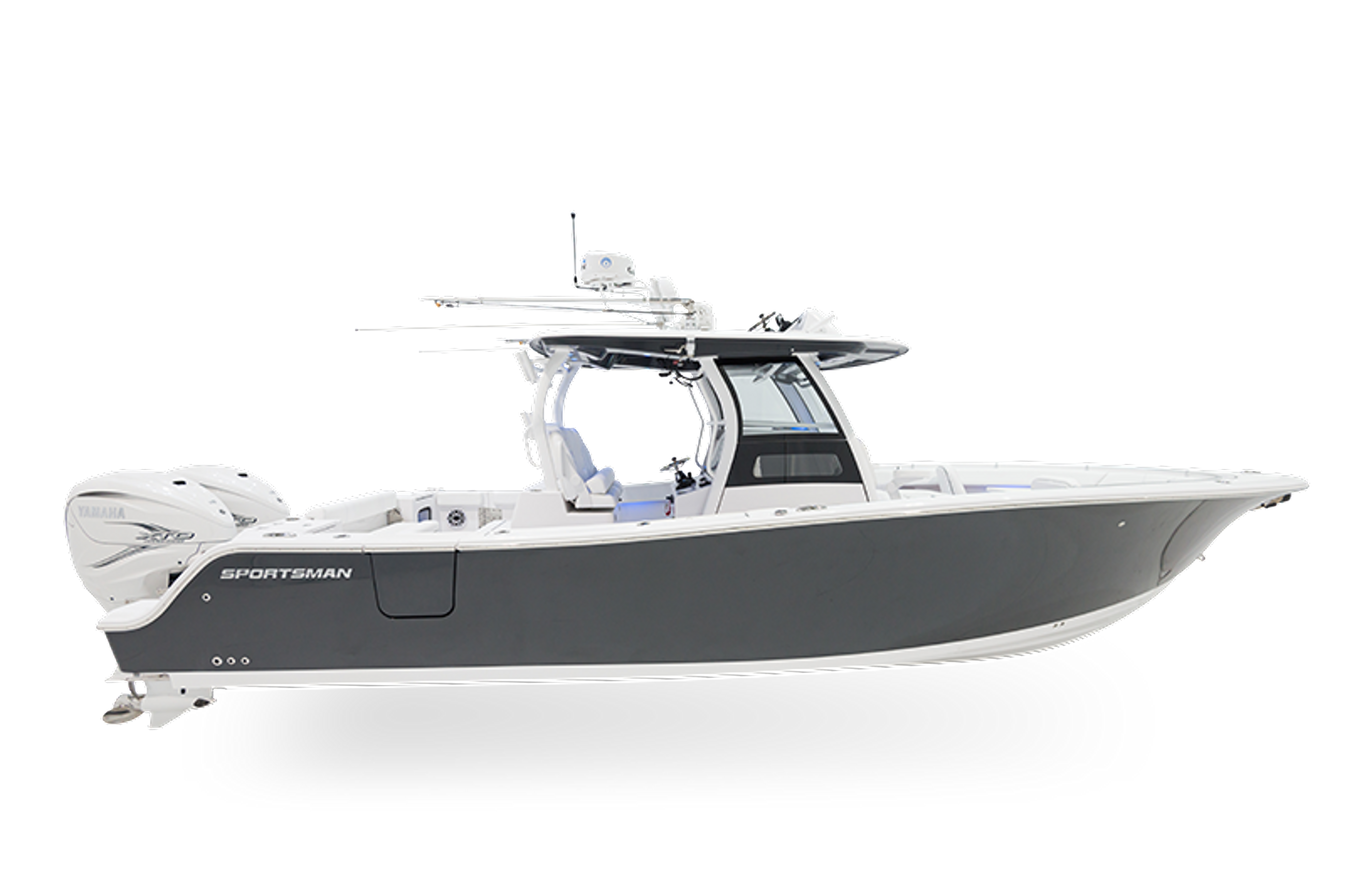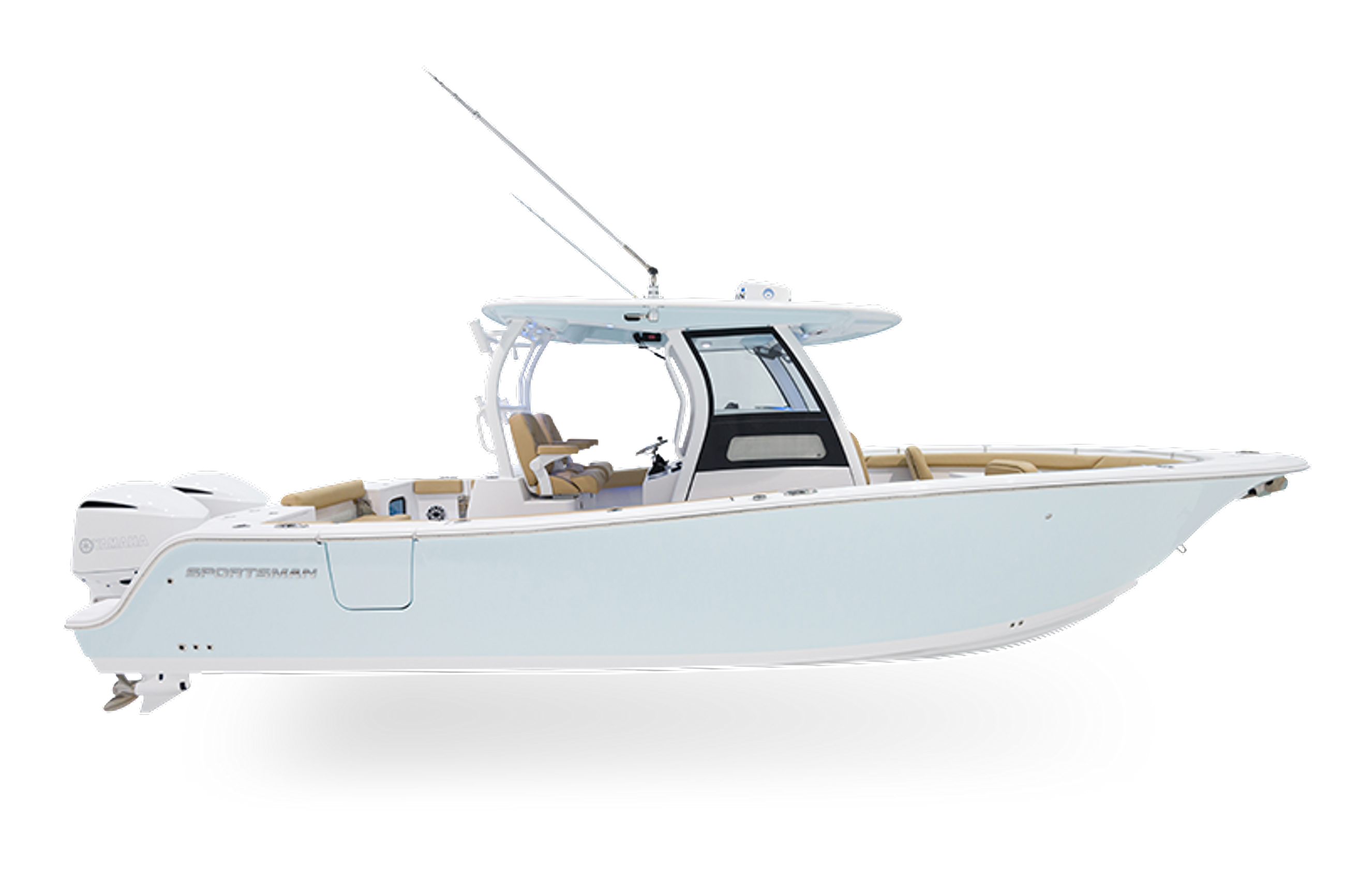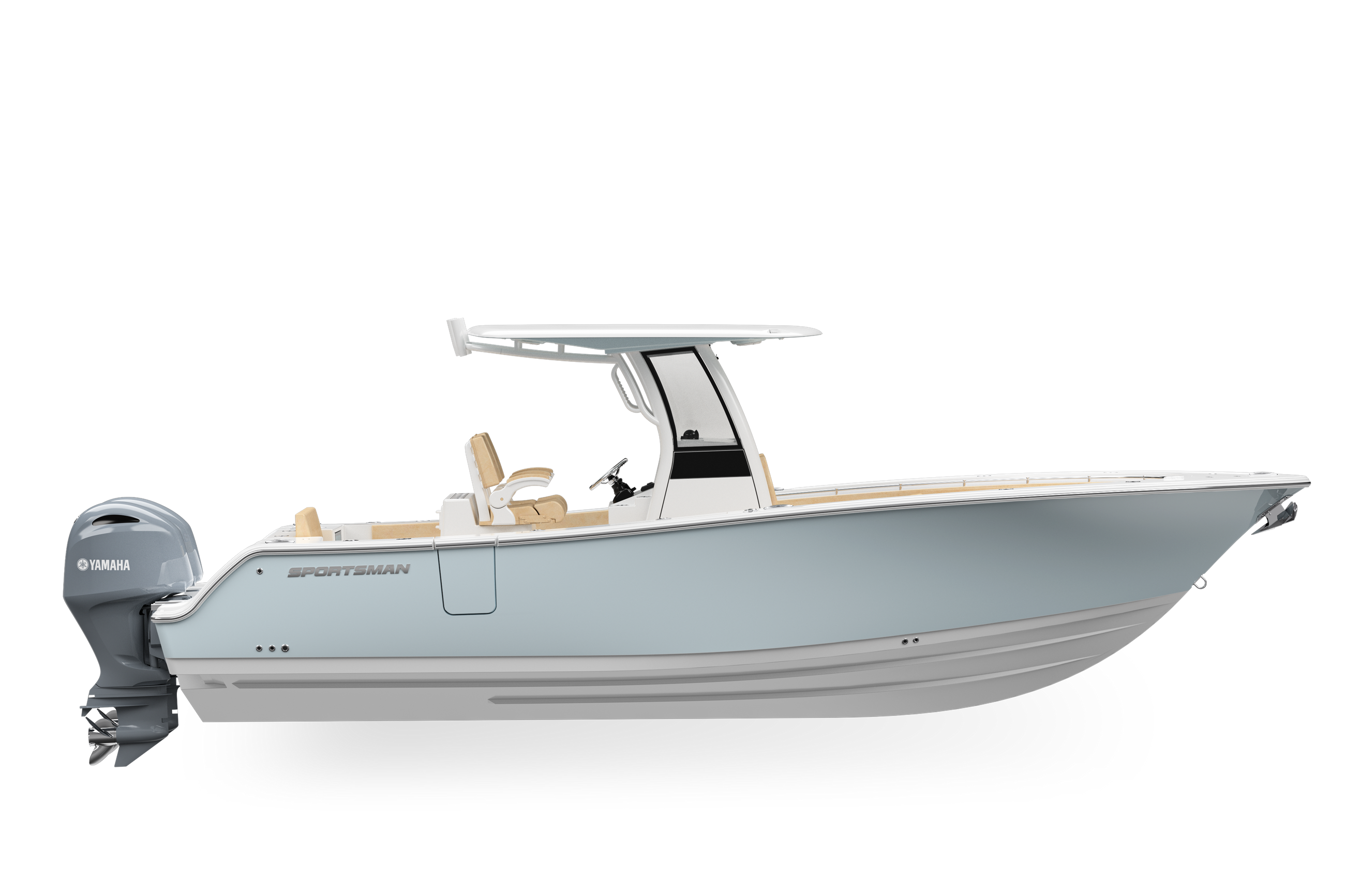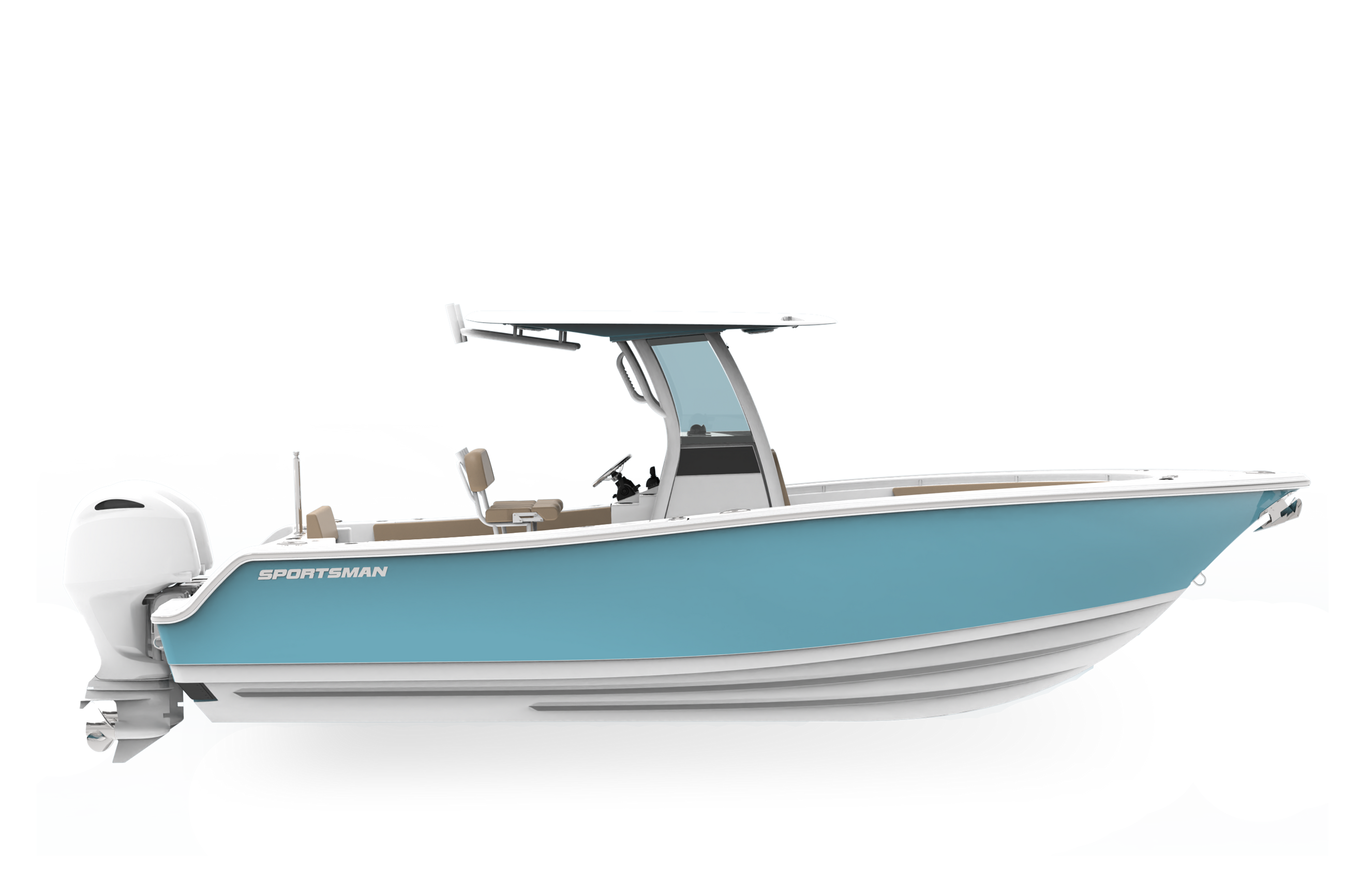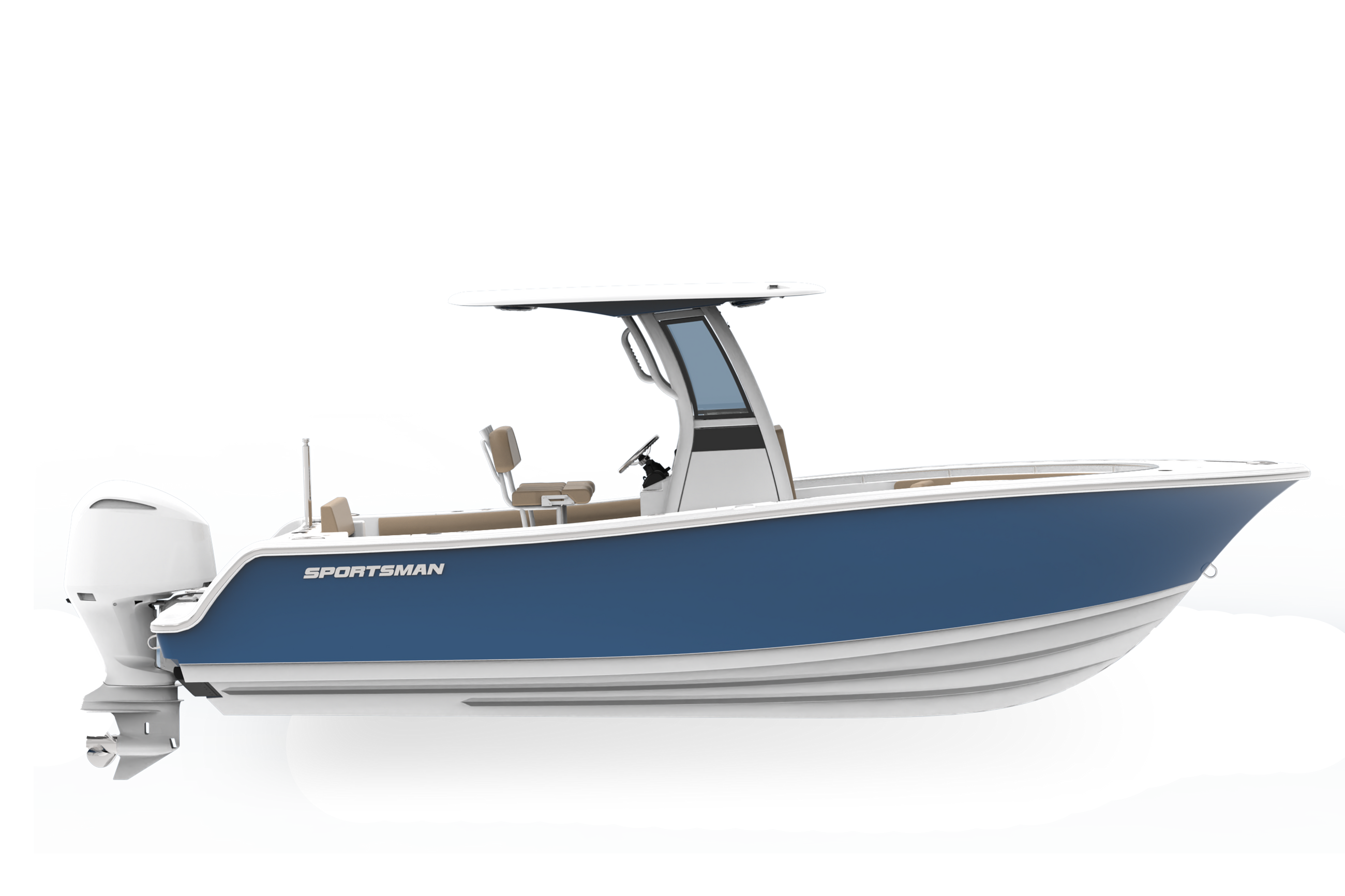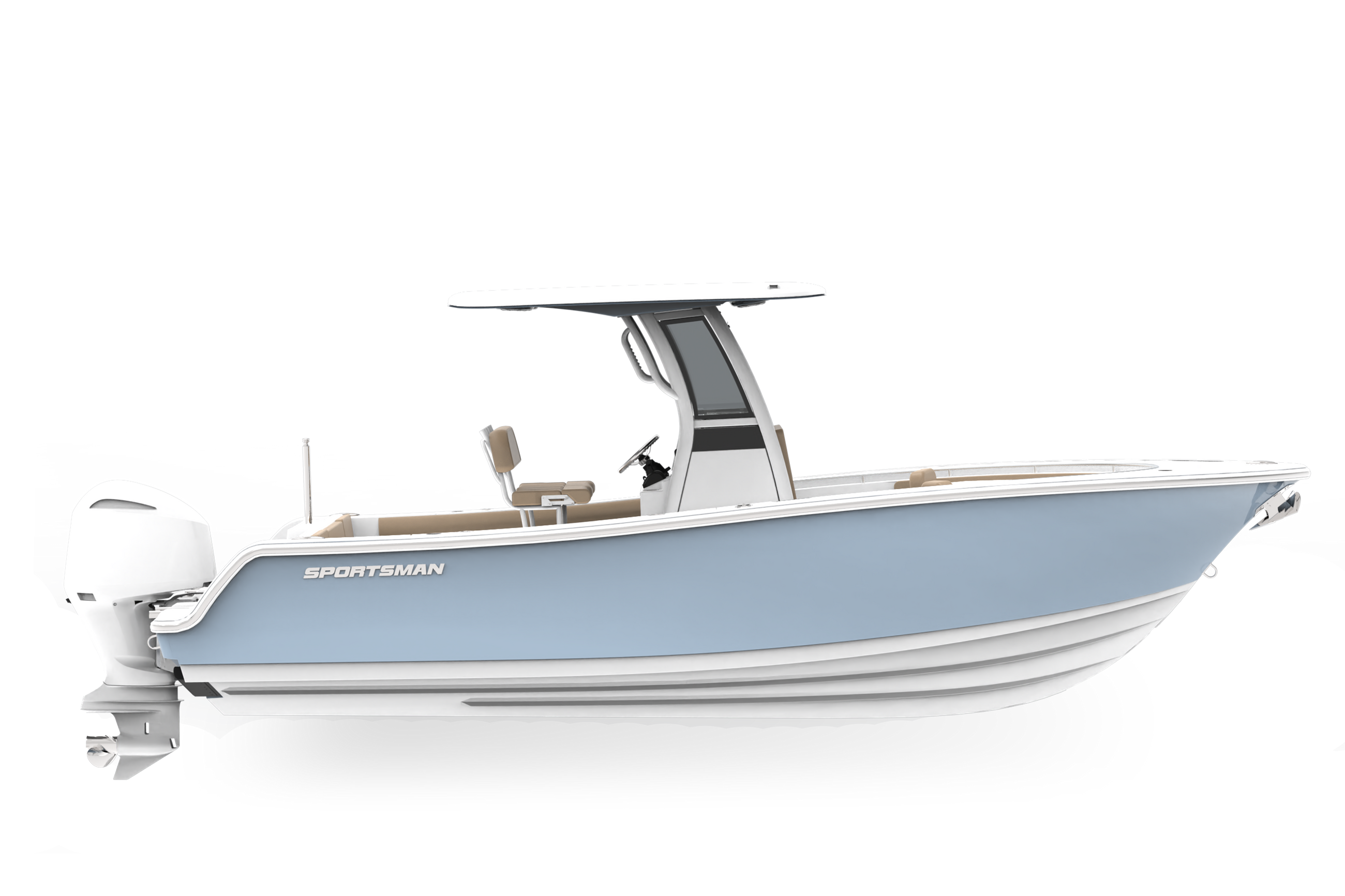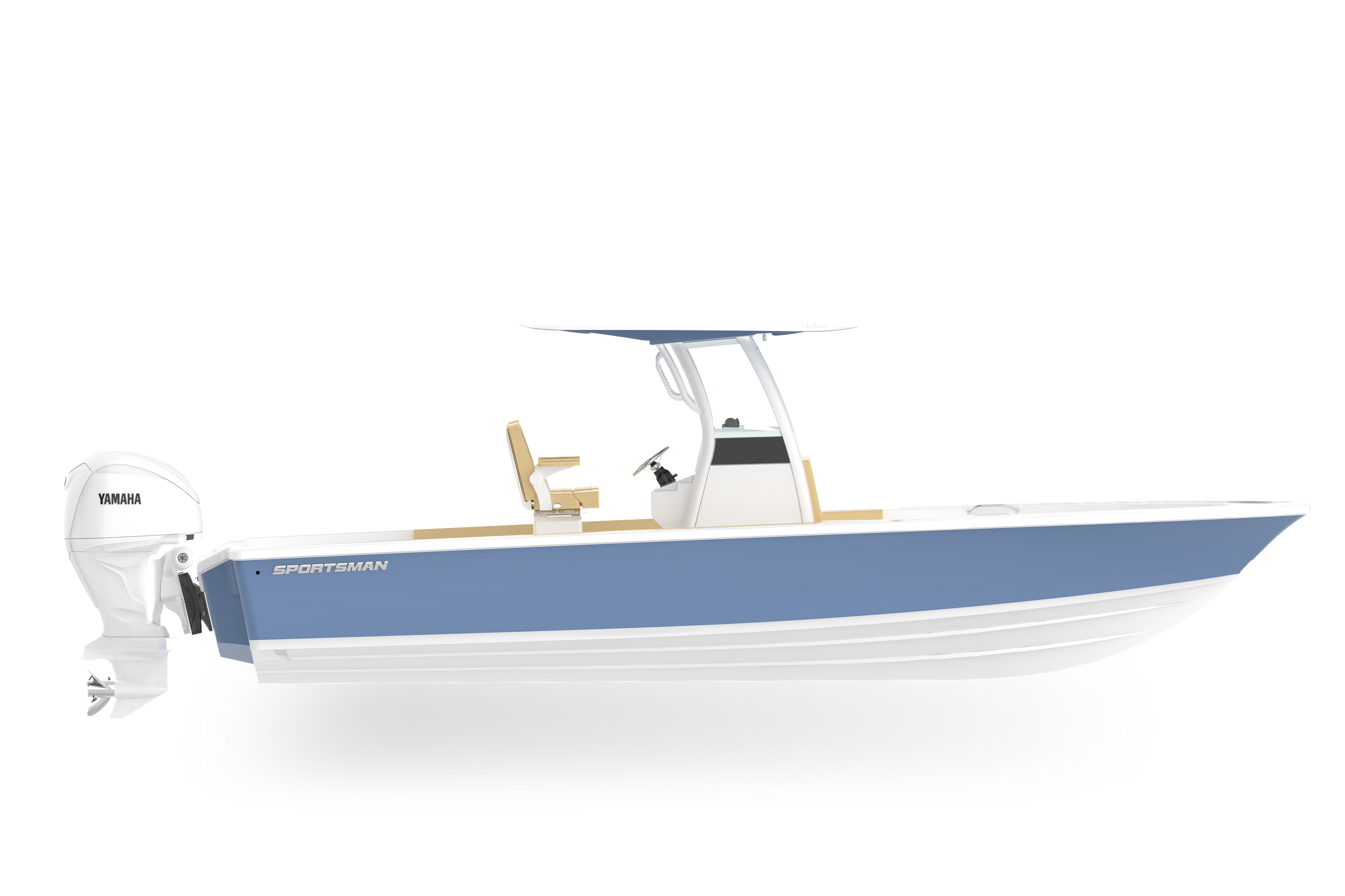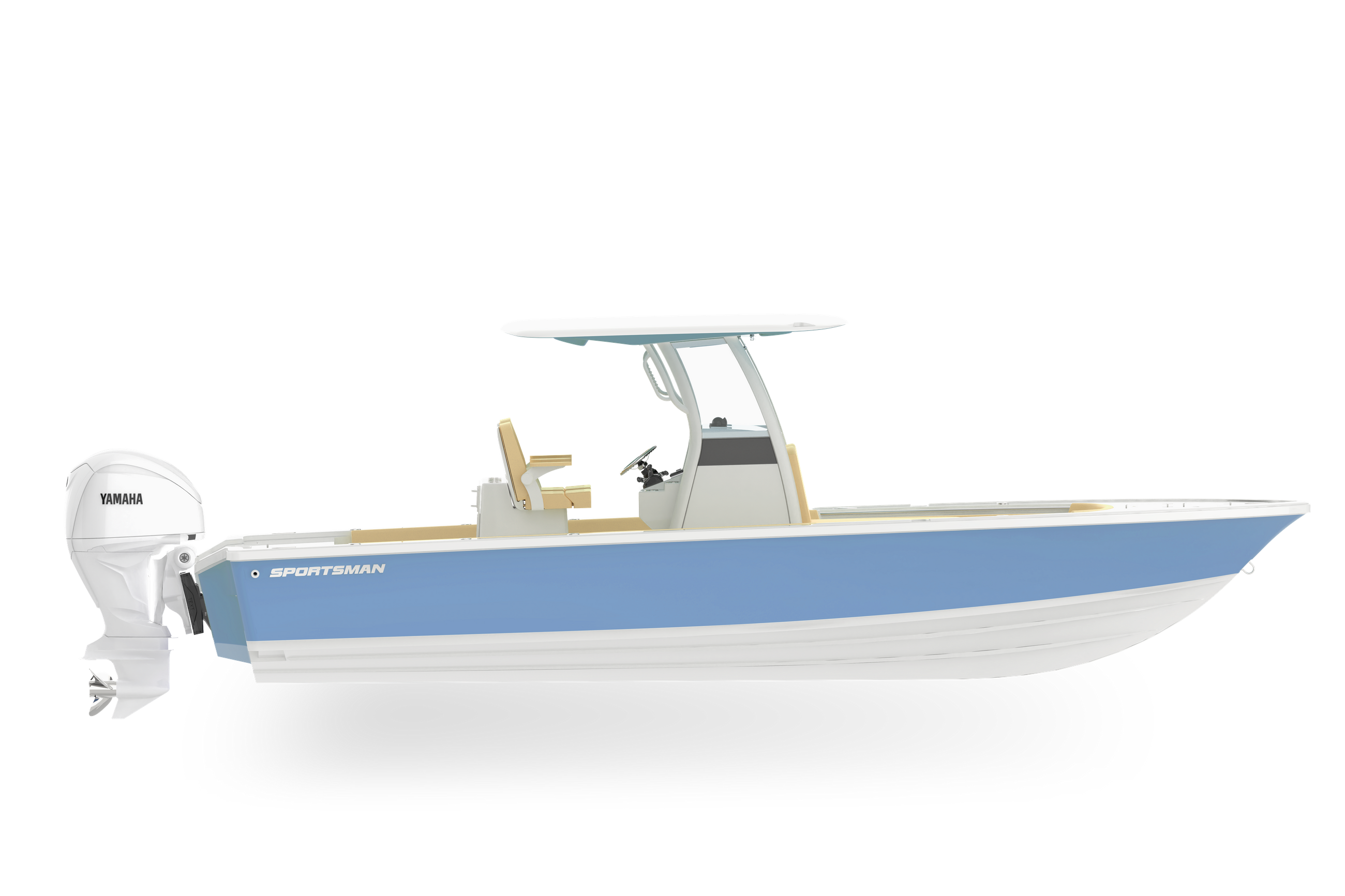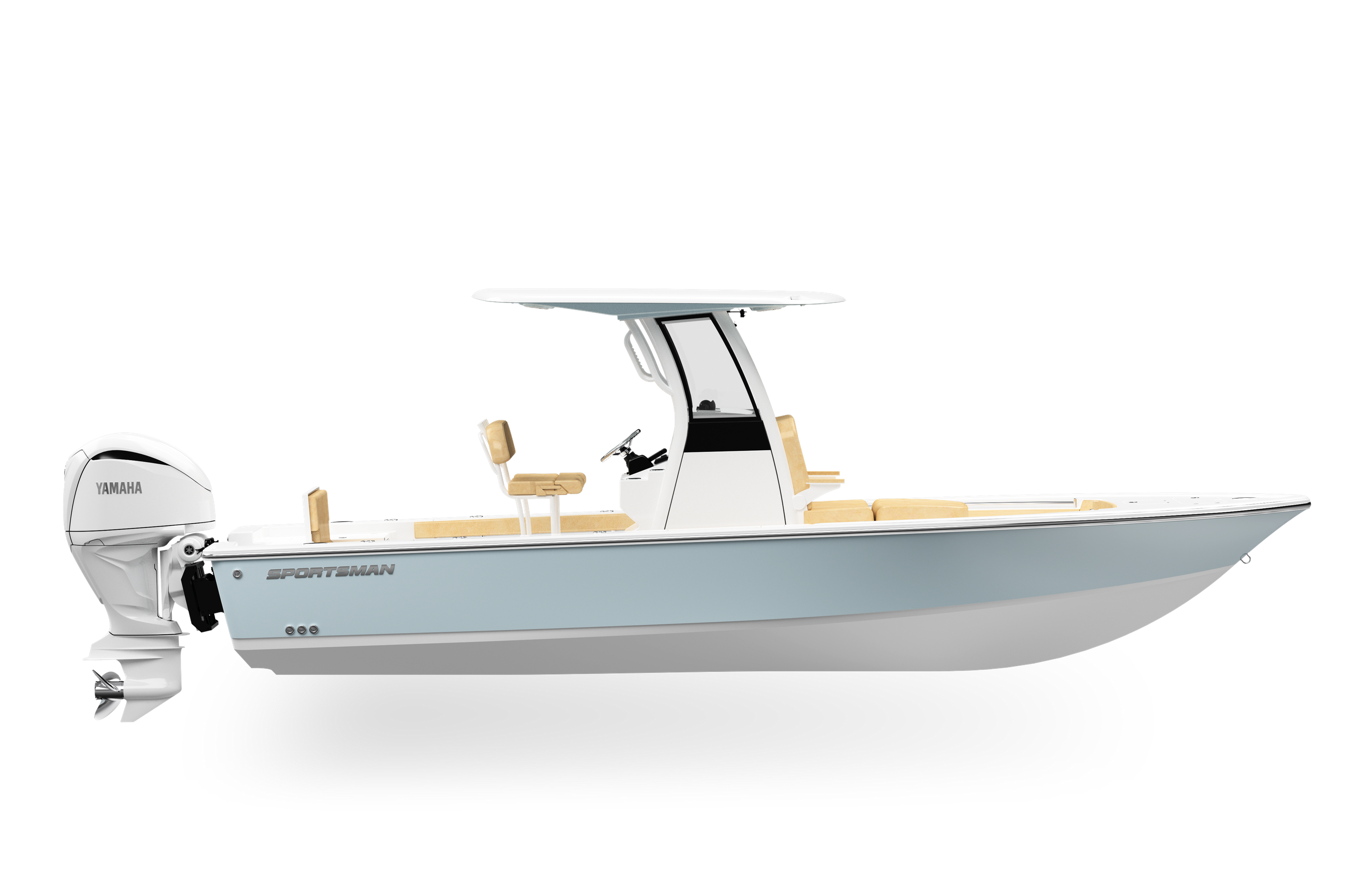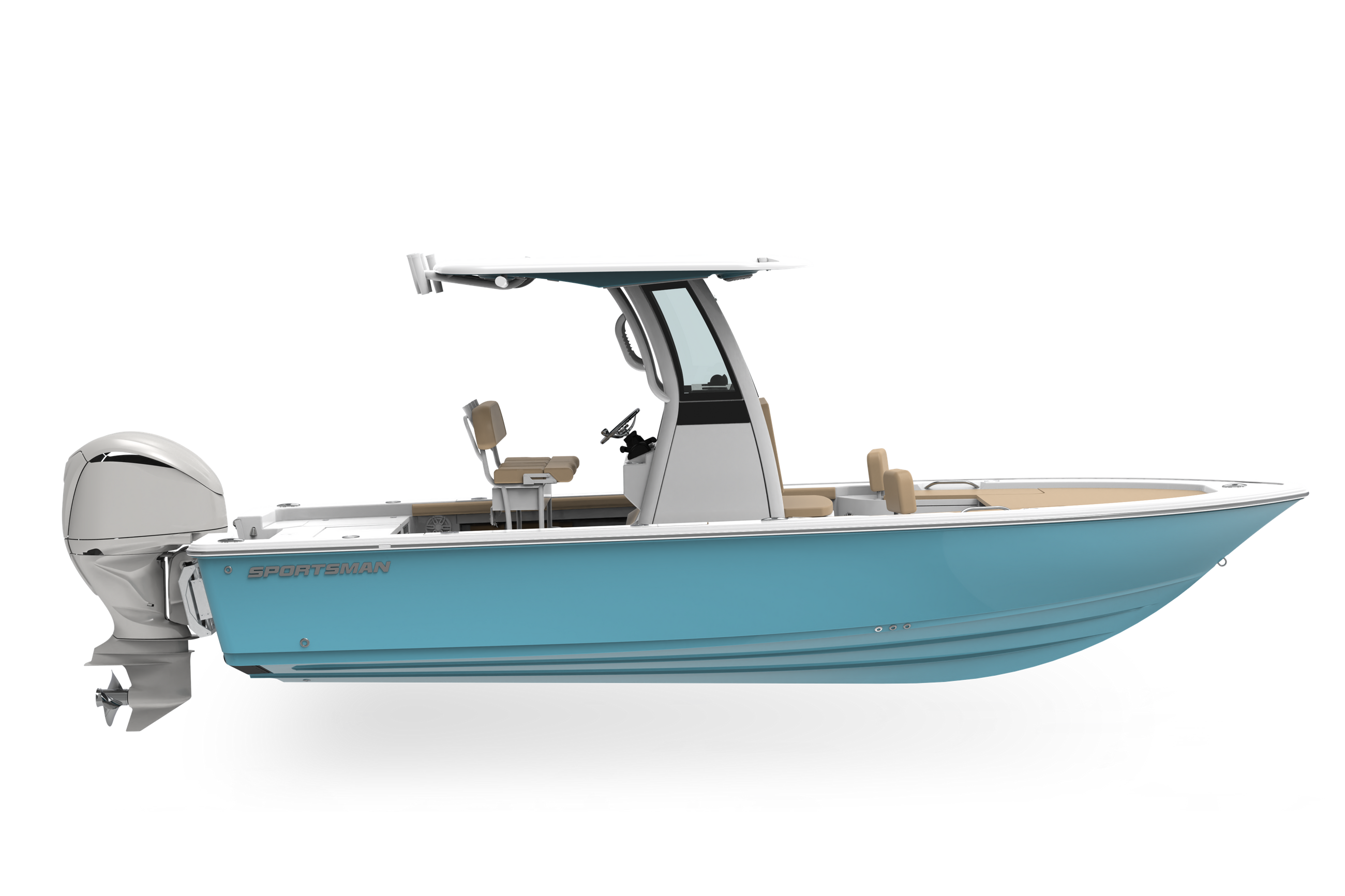Protecting Camera Gear On Board A Boat
Taking your camera gear on a boat can be intimidating at first, but with the right techniques, it becomes second nature. Soon, you'll be capturing stunning shots without worry. To help you navigate this process smoothly, here are some essential tips to protect your cameras while on the water, ensuring you can focus on getting those perfect photos without fear of damage.
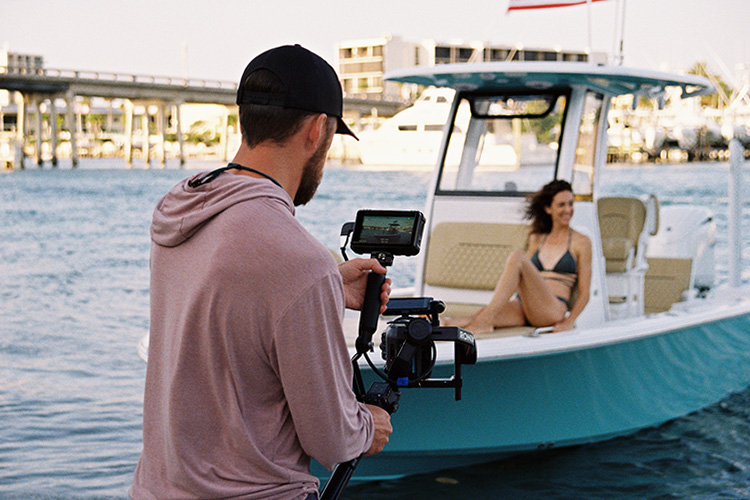
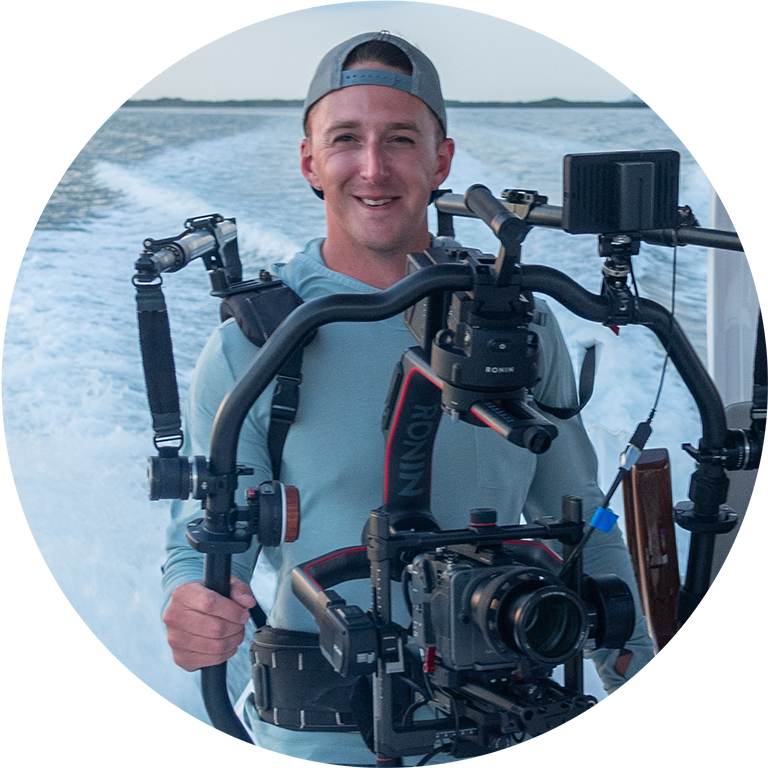
Over the years I have spent a lot of time on the water and generally if I am on the water, I have a camera with me whether it’s on a photoshoot with work or a day out with the guys fishing or hunting. As a boat lifestyle photographer and videographer, I often get asked about how I protect my gear while on the boat. These methods have been refined over the year of experience, and they continue to evolve.
Just recently I noticed a lot of posts within a Facebook group where people were posting their cameras on a gimbal filming what we call boat-to-boat video. This is when a camera operator is on a “chase boat” or “camera boat” and getting footage of the “talent boat.” A lot of people were commenting wow you’re going to ruin your camera or hopefully you don’t drop it. I figured I would share my experience in the group and shared some photos of myself on the boat with my camera rig. I explained that it’s a very stable camera setup, even at top speeds over 60 MPH. I reminded people I do this 100 plus days a year and have never had any sort of failure where a camera fell, or I dropped the camera. It’s honestly a safe camera rig if you practice safe handling of it. I proceeded to get a lot of comments about how I should wrap my camera in plastic to protect it from the salt water. While this is not a bad idea it’s also not ideal for someone who’s doing this on a regular basis.
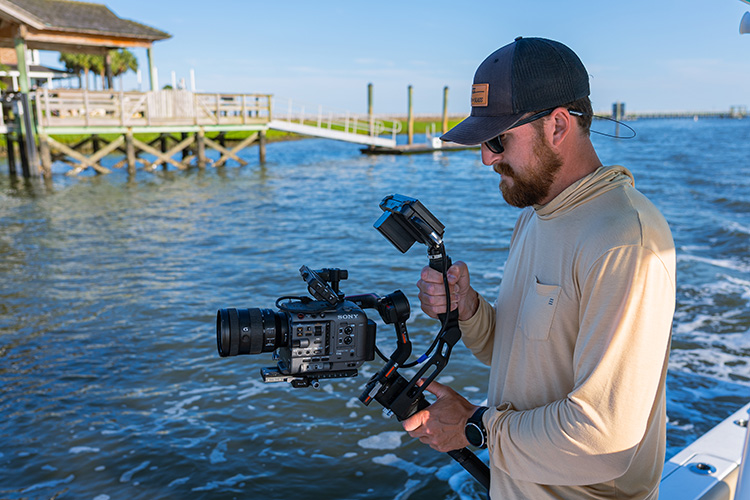
Key Elements For Protecting Your Gear
When handling expensive cameras on the water there’s a few things I like to have in place for protection. You need good storage, a cleaning kit and safe rigging to lock your camera into the boat.
Storage
When it comes to storage I am thinking where can you put your camera when you’re not using it, when it starts to rain or when conditions kick up and it’s not ideal to have the camera out. What I have found over the years is the best way to store a camera on the boat is one of two ways…
Soft-Side Cooler Bag: This is by far the easiest and my favorite method for storing gear on the boat. You can get a soft-side cooler bag that protects the gear from outside elements like water intrusion or bumps while riding. They’re also large and easy to stuff full of gear and avoid you needing to have several bags on board, this will make the skipper happy. The only downfall of this method is while they’re great to stuff your gear into it lacks the organization and when packed should be packed so that certain items inside don’t damage other items inside. For this reason, I like to use the handy dandy lens cases that comes with lenses and other small bags to pack batteries, mics and anything other gear you need with you. The camera then sits down inside the bag fully rigged and ready to go protected by all the bags surrounding it.
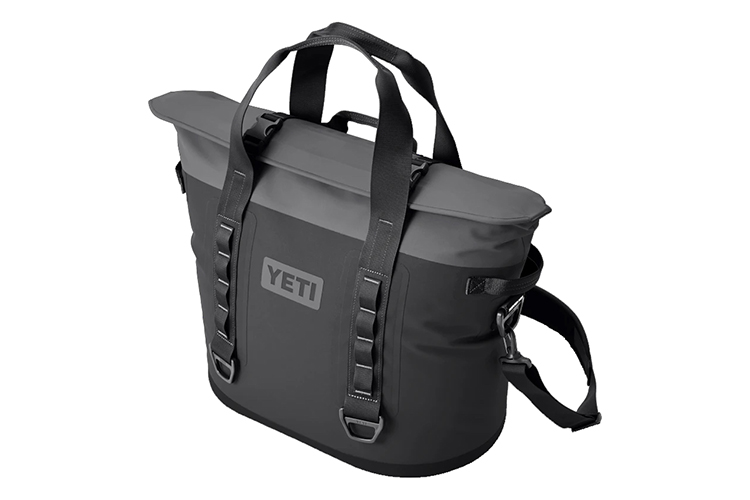
Pelican Cases: These hard cases will protect your gear from a monster truck driving over top of it and probably would hold watertight if it were to sink to a shallow depth of water, however they float when closed (pro-tip). Not only are the indestructible but they’re excellent for organization, my many pelican cases are all custom cut to fit specific gear when flying and traveling. While this is all great for a boat their downfall is, if custom cut they don’t store as much, so you’d want to just use one with dividers for on the boat so you can pack more. However, the cases are not kosher when it comes to the boats non-skid. These cases slide around, or their wheels drag on the boat floor and scratch or leave black marks all over everything. If you’re on a designated camera boat and that’s what it’s used for daily, you’ll be fine but if you’re jumping onto a sportfishing yacht to film some blue marlin fishing I would suggest leaving the pelican in the truck because skipper might throw you overboard.
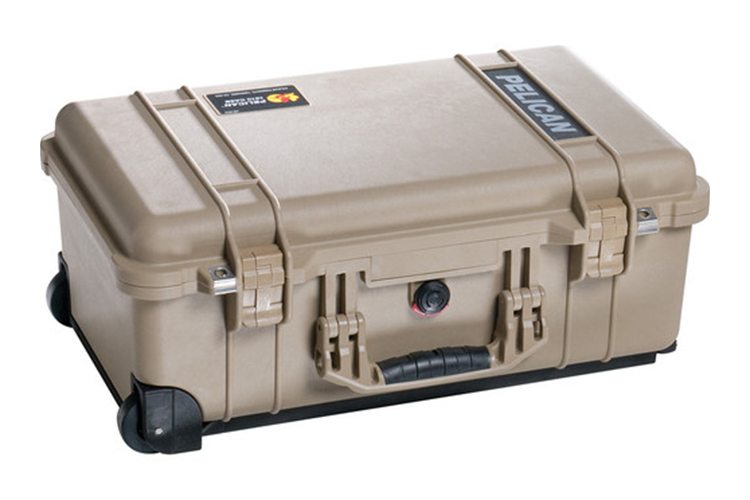
Both storage methods are great but nine times out of ten I choose the soft sided cooler bag due to its functionality. The last thing to consider when talking storage is where on the boat are you going to keep the gear bag or case? Does the boat have an interior console where it can stay put or is it going to be on the deck? All our boats have an interior console, and we keep gear there when not in use. If it’s on the deck beware, a cooler bag if not heavy enough at high speeds will go flying out the back, I know from experience; a pelican case will remain on board, but it might slide. Find a deep dry-box or console storage to keep your gear, if that’s not an option than make sure to strap your gear down somehow.
Pro-Tip: When you need to place your camera down for a moment a few good options are, in a storage cubby on the dash, between the helm chairs and the bolster cushions or back into your bag. Never leave it open and unattended, all it takes is the boat to roll or a change in boat direction quickly to send your camera flying off a seat or surface and crashing on the floor, again, I have learned from experience.
Cleaning Kits
There are several cleaning items you’ll want to have on board to clean lenses, salt spray and even stuff like your hands. It’s essential that while in these conditions you keep your gear clean in order to protect it from prolonged damage.
Basic Camera & Lens Cleaning Kit: You can find these all over the internet, it’s likely that you probably have received one or two when buying cameras or lenses. The basic components are lens wipes or lens spray and microfiber towelette, rocket blower and a small dust brush. Out of this you’re mostly going to use the lens wipes to keep the lens clean and knock any salt water off the lens from spray. You never want to let saltwater sit on the lens; lenses have a protective coating that the saltwater will eat through if not cleaned off. A rocket blower is great to keep your sensor clean. You’re outside, there’s always the possibility of dust getting inside during lens swaps. The dust brush is often not used but good to have for tight spots on the camera that need a little tidying up.
Microfiber Towels: This is something I always have multiples of for several reasons. First, in rough conditions where there may be spray on the camera it’s a soft gentle towel to wipe the camera down with. If available on board wet another towel with the freshwater washdown to ensure all salt is off of the camera, other option if there isn’t a freshwater washdown is just use a bottle of water. Other uses for the microfiber towels are wiping down areas of the boat to clean it up for the shot and keeping your hands clean. If you grab onto a surface of the boat, it’s likely you’ll get salt crystals on your hands and then it transfers to the camera. If you’ve got a moist microfiber around, you can wipe your hands down and keep them clean.
Rigging
When it comes to rigging for your camera, I am mostly reverting back to that conversation I had on a Facebook forum about gimbals and losing the camera into the water. While I have never lost a camera it’s something that’s always in the back of my mind.
DJI Ronin 2: The first camera rig that I had for on water boat to boat stabilization was the Ronin 2, the big expensive and heavy-duty gimbal system for cinema cameras. Combine this beast with the ready rig system and I had a heck of a camera set up that was as stable as they came, comfortable and easy to use. The ready rig system took strain off my body holding the camera, added stability and if I stayed in the boat the camera wouldn’t fall into the water as it was anchored to me. This system was and still is the best option for boat to boat in my professional opinion, but it has a major drawback, it’s HUGE. When working on smaller boats this can be a very cumbersome camera set up taking up a lot of space and making it hard to maneuver around the boat.
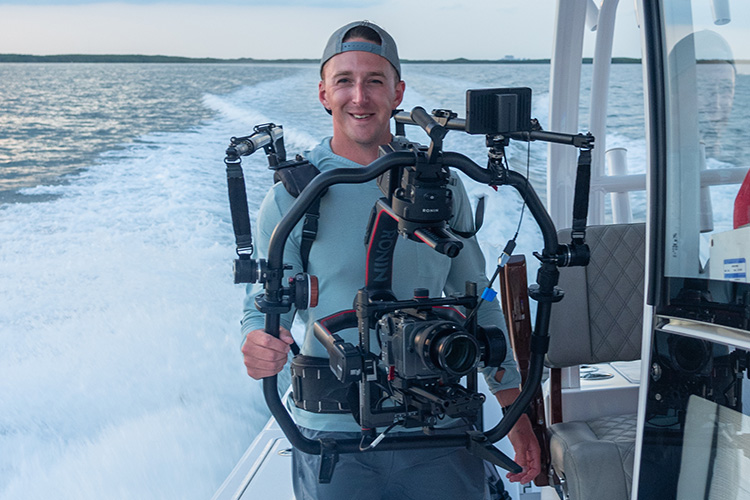
DJI Ronin RS3 Pro: The answer to our large camera rig problems was this compact, lightweight and incredibly strong piece of equipment. This gimbal balances nearly the same weight as the larger Ronin but comes in a small form factor perfect for all-day use and use on small boats. It packs up easily and takes up zero space on the boat. It’s downfall, can’t balance as much weight and doesn’t secure to your body in case of accidental drops. It does however fit nicely into a rod holder for lens changes or a break from holding it.
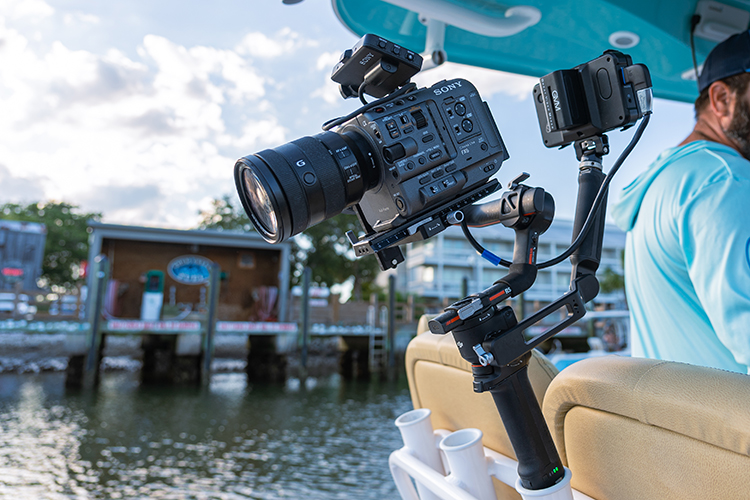
Standard DSLR & Mirrorless Cameras WITH STRAPS: When it comes to photography gear unlike the two previously mentioned rigs, the safest thing you can do is have some sort of strap or body harness for your camera. The strap around your neck will help stabilize photos while underway and if you need to use your hands you can let it hang around your neck and be hands free.
Plastic Camera Coverings: In the beginning I mentioned that on my Facebook post people mentioned I should have the camera wrapped in plastic. This is something you 100% can do but I have found it doesn’t work for the way I operate and, in the end, I don’t feel it’s needed all that much. Modern cameras are weather sealed, if they get salt spray or any water on them wipe them down and they’re pretty good. A plastic cover won’t help you if you drop it in the water so it’s only good for minor splashes. When it comes to operating a camera the plastic bag covering the camera makes accessing buttons harder, hinders the ability to see your screen, if you need to swap lenses you have to take it off and resecure it, when it’s warm out you’re putting your camera that’s trying to circulate air to cool itself into an oven and lastly in my opinion it’s annoying flapping around. For myself, a plastic bag is a waste of time and does not benefit me enough to make it worth it. After almost 10 years of being on and around water filming, I have never had a camera fail from water and I have never let water stop me from getting the shot I wanted. If you want underwater camera protection that’s different, this is when you’ll want an underwater housing or underwater camera, but we will look into those at a later time.
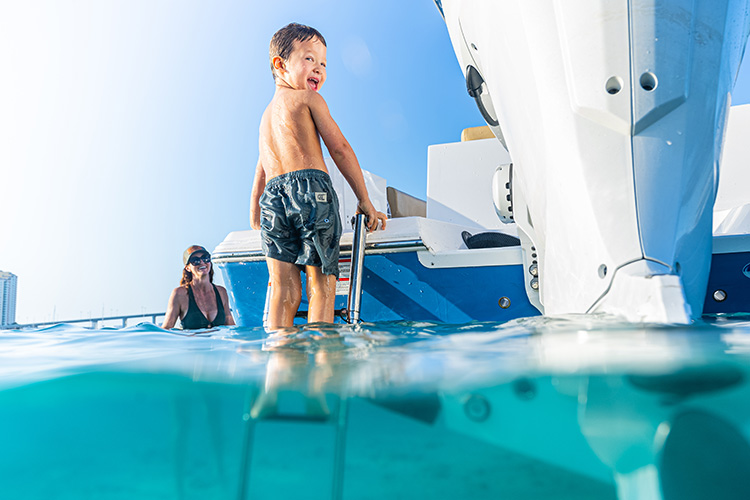
If you’re on the water with any cameras, it’s vital to take precautions to protect them like anything else. Just remember, your camera is still a tool not a family member, don’t let the water scare you into not getting the shot that’s why we carry gear insurance and have budgets to replace gear. Tools are made to work, and tools eventually wear down and get replaced, don’t let the gear stop you from doing what you came to do because you’re too afraid to use it. Get out there and get the shot because you’re one of the lucky few with the opportunity to go capture it.

